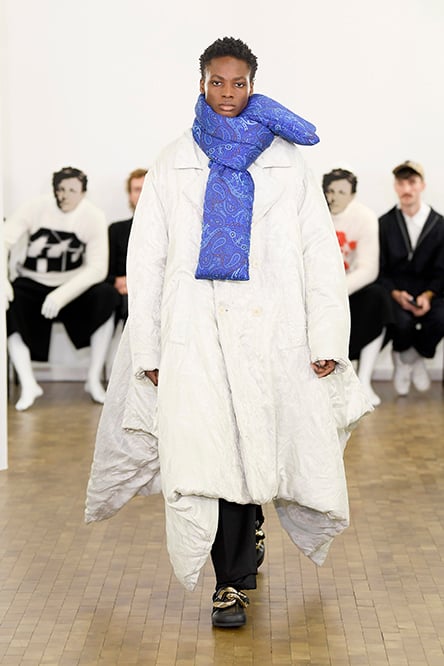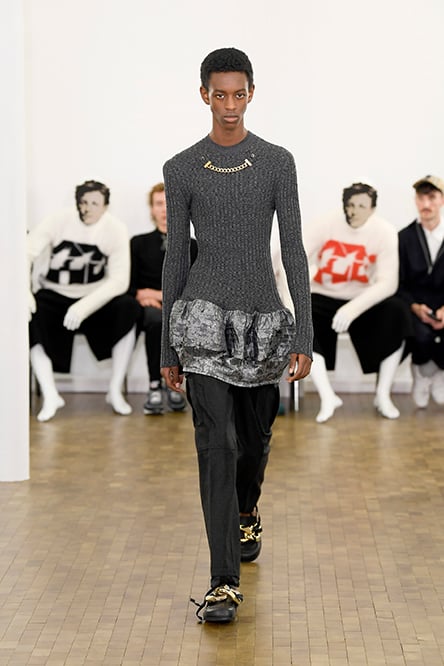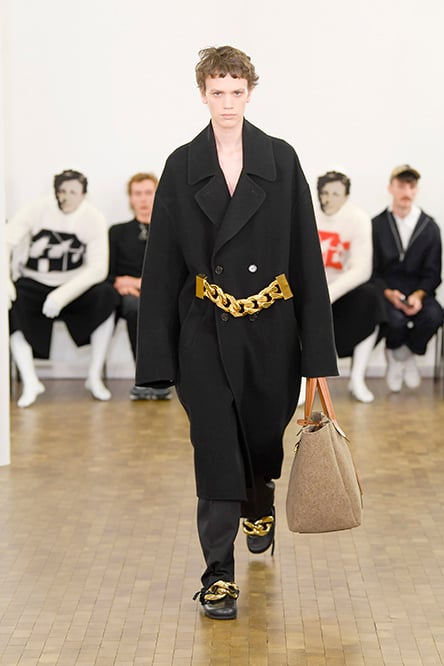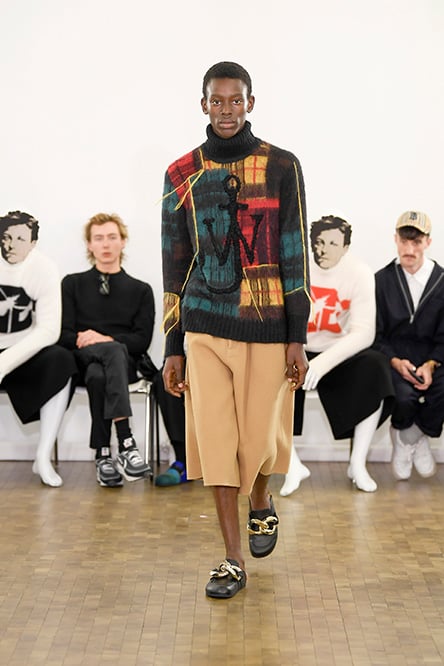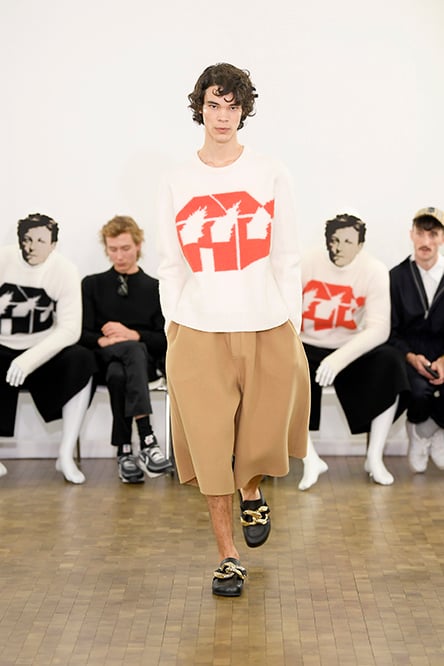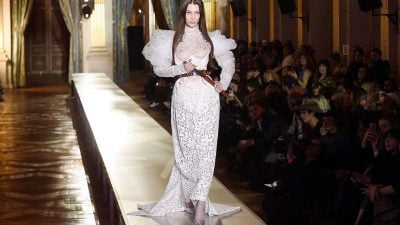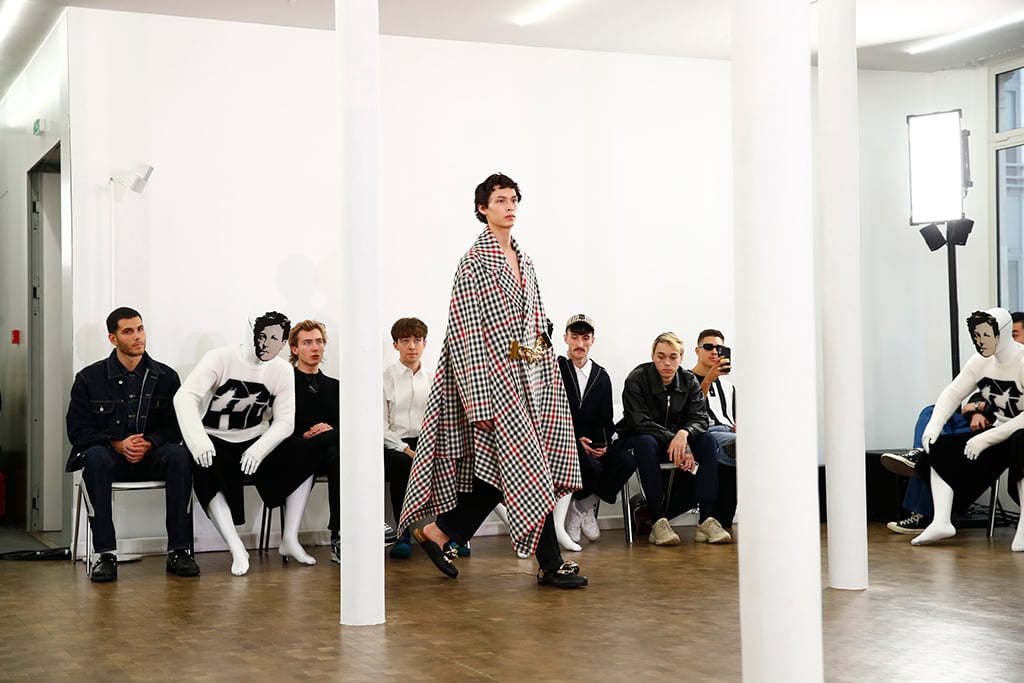
JW Anderson’s Fall 2020 collection proposes a wardrobe of non-binary menswear that could just as easily be found in the closet of an elegant woman. His elongated silhouettes play with volume and lightness, softness and structure. His show opened with a swing shaped double breasted coat with sloped shoulders in a large scale gun-club check with a handkerchief hem that felt almost blanket like. The same silhouette reappeared on coats rendered in various fabrications, including actual duvet quilting with paisley satin. Next followed another very new silhouette for men, a sleeveless body hugging top that billowed out at the hips into a cloud-like peplum. The lightweight fabric was molded into irregular pleating which created a crepe-like surface. Next a geometric front inset sweater emphasized the masculine shape of the torso, effectively melding traditionally masculine and feminine forms into something new, maybe a little uncomfortably challenging, yet undeniably elegant.
The thigh caressing tops came in multiple colors including a brilliant poppy red, that might instill a little outrage as menswear, but would also make a very classy little cocktail dress. There were also elegant calf length shift dresses or tunics, either term is accurate, changing only the way the viewer might perceive the intent of the garment. While these shapes have been reserved in western fashion for women, they felt genuinely plausible and dignified as menswear. Anchoring each look were gold chains enlarged to surreal scale fashioned like fine jewelry rather than something you might find at the hardware store. Yet the extreme visual weight of the chains brought a serious sense of gravity to the collection. Smaller chains buttoned garments like a necklace fragment, while other chains as thick as the models arms belted waistlines on the front of the garments. Two link segments the size of your hand topped elegant backless loafers, which seemed like they would literally weigh down each footstep.
The airy lightness of these challenging non-binary silhouettes literally weighted down with chains was an apt metaphor for one of the major inspirations to Anderson’s collection, David Wojnarowicz. The artist and AIDS activist from New York’s Lower East Side is known for the work he produced in the 80’s as the AIDS crisis emerged. Much of his work dealt with the stigma of growing up as a homosexual and the stigma-induced lack of response from the government and American society to crisis. Wojnarowicz himself died of AIDS in 1992 at the age of 37, after witnessing the death of many people in his community including his mentor and one time lover, Peter Hujar. JW Anderson recreated his burning house stencil – a symbol mutely frantic and urgent on intarsia knit sweaters which closed out the collection. The sweaters were also placed on mannequins sitting throughout the front row wearing the Rimbaud masks Wojnarovicz created for a photography series. Sales of the sweater will support Visual AIDS, an organization that supports HIV-positive artists.
The collection was beautiful but brief- only 35 looks in total. Rather pertinent for a collection inspired by a life cut short.
See All the Looks from the Collection















